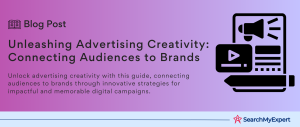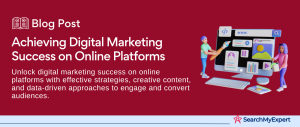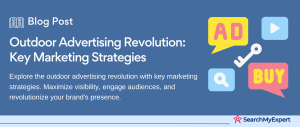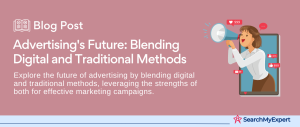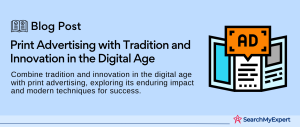Advertising-different-industries
The concept of advertising and its significance in various industries.
Advertising, an indispensable tool in the modern business world, serves as a vital link between companies and customers. Across various industries, it plays a pivotal role in shaping consumer perceptions, driving sales, and establishing brand identity. The landscape of advertising is remarkably diverse, reflecting the unique needs and characteristics of different industries. This diversity is not just about creativity and channels used; it’s deeply rooted in the fundamental approach towards the target audience.
The essence of advertising lies in its ability to adapt. Whether it’s a captivating television commercial, a meticulously designed social media campaign, or an innovative outdoor billboard, the strategies employed in advertising are as varied as the industries themselves. From the fashion sector, known for its visually stunning and trend-setting advertisements, to the technology industry, where advertising often revolves around innovation and functionality, the strategies are tailored to resonate with specific audiences.
In the healthcare industry, for instance, advertising takes a more informative and trust-building approach, focusing on the efficacy and safety of products. Contrast this with the automotive industry, where advertising often revolves around the emotional appeal of freedom, status, and advanced features. Similarly, the food and beverage sector frequently employs sensory appeal in its advertisements, making the products irresistible through visuals and descriptions that stimulate taste and smell sensations.
The diverse nature of advertising strategies across different industries.
This diversity in advertising strategies highlights the importance of understanding the unique demands and consumer psychology of each industry. It underscores the need for businesses to craft their advertising campaigns with precision and creativity, ensuring they align with the expectations and desires of their target audience.
As we delve deeper into the realm of advertising, it’s crucial to distinguish between the two primary market domains: B2B (Business-to-Business) and B2C (Business-to-Consumer). Each of these domains requires a distinct advertising approach, reflective of their unique audience and objectives. In the following section, we will explore these differences in detail, shedding light on the specialized strategies that define B2B and B2C advertising.
Understanding Advertising in B2B and B2C Industries
The world of advertising is divided into two main realms: B2B (Business-to-Business) and B2C (Business-to-Consumer), each with its distinctive approach and strategies.
B2B Advertising: The Rational and Technical Approach
- B2B advertising targets the needs, interests, and challenges of individuals who make purchases on behalf of their organization. Unlike B2C, where the decision is often emotional, B2B advertising focuses on logical argumentation and the practical benefits of products or services.
- In B2B, the advertising content is typically more informative and detailed, delving into technical aspects and unique selling propositions that are relevant to businesses. This can include data-driven insights, cost-benefit analyses, and detailed product specifications.
- B2B advertisements often use platforms like LinkedIn, industry-specific journals, or trade shows, targeting a more niche audience. The tone is professional, and the messaging is tailored to resonate with decision-makers within organizations, such as managers and executives.
- Relationship-building is a crucial aspect of B2B advertising. The goal is often to establish long-term partnerships and trust, rather than prompt a one-time purchase.
B2C Advertising: Building Emotional Connections and Brand Identity
- B2C advertising focuses on reaching the end consumer, emphasizing the creation of an emotional connection and brand recognition. The strategies here are designed to evoke feelings, desires, and aspirations, making the product or service appealing to a broader audience.
- The content in B2C advertisements is usually more engaging and relatable, often using storytelling, humor, and aspirational themes to connect with the audience on a personal level.
- B2C advertising leverages a wide array of channels, including television, social media, print media, and online platforms, aiming to reach a large and diverse audience.
- The focus is on creating a brand image that resonates with consumers’ lifestyles, values, and preferences, thereby driving impulse buys and fostering brand loyalty.
Advertising in the consumer goods industry is a crucial aspect of marketing that involves promoting products to consumers through various channels and strategies. Let’s delve into the specifics:
Advertising in the Consumer Goods Industry
Importance of Branding and Packaging
Branding:
- Identity & Recognition:
Branding creates a unique identity for products, distinguishing them from competitors. A strong brand builds recognition and loyalty among consumers. - Emotional Connection:
Effective branding can evoke emotional responses, leading to a deeper consumer connection. For instance, brands like Nike and Apple have cultivated a loyal following through aspirational and innovative branding. - Value Proposition: It communicates the value and benefits of a product, enhancing its perceived value and justifying the price point.
Packaging:
- First Impression: Packaging is often the first interaction a consumer has with a product. Eye-catching and functional packaging can significantly influence purchasing decisions.
- Brand Message & Information:
Packaging conveys essential information and brand messaging. It can also reinforce brand identity through design elements like logos, colors, and fonts. - Sustainability Factor:
Increasingly, sustainable packaging is becoming important, resonating with environmentally conscious consumers.
Effectiveness of Different Advertising Channels
Television Commercials:
- Broad Reach:
TV has a wide reach, making it effective for building brand awareness. - Visual Impact:
It combines visual and auditory elements, making messages memorable. However, costs can be high, and changing viewing habits (like streaming services) impact its effectiveness.
Social Media Marketing:
- Targeted Reach:
Platforms like Facebook, Instagram, and TikTok allow for targeted advertising based on user demographics, interests, and behaviors. - Engagement & Feedback: Social media facilitates direct engagement with consumers and provides immediate feedback.
- Cost-Effective: Compared to traditional media, social media can be more cost-effective and measurable in terms of ROI.
Influencer Partnerships:
- Trust & Credibility:
Influencers often have dedicated followers who trust their recommendations. - Niche Markets:
They can effectively reach niche markets and demographics. - Authenticity:
Authentic influencer partnerships can enhance brand perception and drive sales.
Advertising in Technology and Services Industries
Examples of Successful Consumer Goods Advertising Campaigns
- Coca-Cola’s “Share a Coke” Campaign: This campaign personalized bottles with names, creating a personal touch and viral sensation. It effectively used social media to engage consumers.
- Dove’s “Real Beauty” Campaign:
Focused on real people and diversity, this campaign resonated emotionally with a broad audience, enhancing Dove’s brand as inclusive and authentic. - Old Spice’s “The Man Your Man Could Smell Like” Campaign:
Revitalized the brand with humor and quirky ads, significantly increasing sales and social media engagement.
Challenges of Advertising Intangible Products and Services
- Abstract Concepts:
Unlike consumer goods, services, and technology products are often not physically tangible, making it harder to convey their benefits and functionalities visually. - Demonstrating Value: Proving the value and effectiveness of a service or software can be challenging without a physical product to showcase.
- Building Trust: Consumers may be skeptical about the efficacy of a service or technology product they cannot see or touch, so building trust is crucial.
- Complexity of Products: Technology products can be complex, and simplifying the message for a broad audience without losing the essence of the product is challenging.
- Rapid Change:
The fast-paced evolution in the technology sector means advertising strategies need to be agile and adaptable to stay relevant.
Role of Content Marketing and Thought Leadership
Content Marketing:
- Educational Content:
This involves creating informative content that helps consumers understand the product or service, its uses, and benefits. Blogs, whitepapers, and how-to videos are common formats. - Storytelling:
Effective content marketing often tells a story, connecting the product or service to real-life situations or problems it can solve. - SEO & Online Visibility: Quality content can improve search engine rankings, making it easier for potential customers to find the product or service.
Thought Leadership:
- Building Credibility: By establishing themselves as experts in their field, companies can build credibility and trust among their target audience.
- Influencing Decisions:
Thought leadership content like industry insights, trend analysis, and future predictions can influence purchase decisions, especially in B2B environments. - Networking and Partnerships: Thought leadership can open doors for networking and partnerships, further enhancing the brand’s reach and credibility.
Examples of Effective Advertising Campaigns in Technology and Services
- IBM’s “Smarter Planet” Campaign: This campaign showcased how IBM’s technology solutions address global issues. It effectively used storytelling and thought leadership to present complex technologies in relatable ways.
- Salesforce’s “Trailhead” Platform: Salesforce created an interactive, gamified learning platform to educate users about its products and the broader CRM industry. This approach effectively combined content marketing with product education.
- Slack’s “Where Work Happens” Campaign:
This campaign focused on demonstrating how Slack improves workplace communication. Using real-life scenarios and humor, it effectively communicated the benefits of an otherwise intangible product. - HubSpot’s Inbound Marketing Strategy: HubSpot’s extensive use of educational content, blogs, webinars, and ebooks has positioned it as a leader in inbound marketing, illustrating the power of content marketing.
Advertising in Healthcare and Pharmaceuticals
Regulatory Considerations and Ethical Guidelines
- Strict Regulations:
Healthcare and pharmaceutical advertising is subject to stringent regulations by bodies like the U.S. Food and Drug Administration (FDA) and the European Medicines Agency (EMA). These regulations ensure that advertisements are truthful, not misleading, and backed by scientific evidence. - Disclosure of Information: Advertisements for prescription drugs must include information about side effects, contraindications, and effectiveness. This information should be presented in a clear and understandable manner.
- Direct-to-Consumer Advertising: In countries like the United States, where direct-to-consumer (DTC) pharmaceutical advertising is allowed, there are specific guidelines about how drugs can be marketed, including the requirement to present a balanced view of risks and benefits.
- Ethical Marketing: Ethical considerations include avoiding the exaggeration of benefits, not creating unnecessary demand for drugs, and ensuring that marketing practices do not influence healthcare professionals’ prescribing behaviors unethically.
Advertising in Financial and Insurance Industries
Evidence-Based Messaging and Targeted Audience Segmentation
- Evidence-Based Messaging:
In healthcare advertising, it is critical to base messaging on scientific evidence. Claims must be substantiated by clinical trials and research, ensuring accuracy and credibility. - Understanding the Audience:
Targeted audience segmentation is vital due to the diversity of healthcare consumers and their specific needs. Different patient groups may require different information and communication styles. - Educational Approach:
Often, healthcare advertising includes an educational component, informing patients about diseases, treatment options, and lifestyle adjustments, in addition to promoting specific products or services.
Examples of Impactful Healthcare Advertising Campaigns
- Pfizer’s “Get Old” Campaign:
This campaign focused on changing the conversation around aging and promoting a healthier lifestyle. It was impactful in its positive and empowering messaging, moving away from traditional drug advertising. - Novartis’s “Heart to Heart” Campaign for Heart Failure Awareness:
Novartis created an interactive campaign to educate patients about heart failure, using storytelling to connect with audiences on an emotional level and emphasizing the importance of early diagnosis and treatment. - Merck’s “America’s Diabetes Challenge”: This campaign aimed to raise awareness about type 2 diabetes management. By involving celebrities and utilizing social media, the campaign effectively reached and engaged a broad audience.
- Johnson & Johnson’s Mental Health Awareness Campaigns:
J&J has run various campaigns to destigmatize mental health issues. These campaigns are notable for their focus on education and advocacy, crucial in the healthcare sector.
Importance of Trust and Credibility
- Building Consumer Confidence: Trust is the cornerstone of any financial relationship. Advertising in these sectors must foster confidence and reliability, ensuring customers feel secure in their financial decisions.
- Long-Term Relationships: Unlike many consumer goods, financial and insurance products are often long-term commitments. Establishing trust is essential for customer acquisition and retention.
- Reputation and Branding: In an industry where many products are similar, a company’s reputation and credibility can be key differentiators. Advertising needs to reinforce a positive and trustworthy brand image.
Clear Communication and Risk Disclosures
- Transparency in Messaging:
Clarity and honesty in communication are essential. Financial products can be complex, and advertising should aim to simplify and explain them in an easily understandable manner. - Risk Disclosure: Regulatory bodies often require that financial and insurance advertisements clearly disclose risks. This includes outlining potential downsides, terms, and conditions in a transparent manner.
- Educational Approach: Many successful campaigns also focus on educating the consumer about financial planning, insurance policies, and investment strategies, which can enhance the perceived value and credibility of the service.
Examples of Successful Financial and Insurance Advertising Campaigns
- GEICO’s Humorous Campaigns: GEICO has effectively used humor in its advertising, making insurance topics more approachable. Their memorable slogans and characters, like the GEICO gecko, have significantly boosted brand recognition.
- American Express’s “Small Business Saturday”:
This campaign not only promoted American Express services but also advocated for small businesses. It positioned AmEx as a supporter of local communities, enhancing its brand image. - Prudential’s “Challenge Lab”:
Aimed at breaking common financial misconceptions, Prudential used interactive and educational content to engage consumers and position itself as a thought leader in the financial industry. - Allstate’s “Mayhem” Campaign:
Allstate’s advertisements personified the concept of “mayhem” to highlight the unpredictability of accidents and the need for insurance, effectively blending humor with serious messaging.
Mastering the Art of Advertising Across Diverse Industries
In this comprehensive exploration of advertising in different industries, we’ve journeyed through the intricate world of marketing strategies, emphasizing the pivotal role of industry-specific nuances. As we conclude, it’s essential to distill the key takeaways, underscoring the importance of tailored approaches, creativity, and ethical advertising practices.
Understanding Industry-Specific Nuances
- Customization is Key:
Each industry has its unique set of challenges, customer expectations, and market dynamics. Customizing advertising strategies to these nuances is not just beneficial but necessary for success. - Research-Driven Insights: Deep dive into industry-specific trends, consumer behavior, and competitor strategies. This knowledge forms the backbone of any effective advertising campaign.
The Role of Creativity and Innovation
- Breaking the Mold:
In the cluttered space of advertisements, creativity isn’t just an asset; it’s a necessity. Whether it’s the tech-savvy approach in the IT sector or the emotion-driven campaigns in healthcare, standing out requires innovative thinking. - Leveraging Technology:
From AI in automotive advertising to VR in real estate marketing, embracing technological advancements can lead to groundbreaking campaigns.
Ethical Considerations in Advertising
- Responsibility and Trust:
Advertising holds power. With this power comes the responsibility to be truthful and ethical. Misleading advertisements not only damage brand reputation but also erode consumer trust. - Sustainability and Social Impact:
Especially in industries like fashion and FMCG, advertising campaigns that highlight sustainability and positive social impact resonate more with the modern consumer.
Conclusion
Advertising across different industries is not a one-size-fits-all affair. It demands a keen understanding of the industry, an innovative approach, and a commitment to ethical practices. These elements, when harmoniously combined, create advertising strategies that not only capture attention but also build lasting relationships with consumers.
Craft a winning narrative with our Advertising Services.
Table of Contents
Toggle

